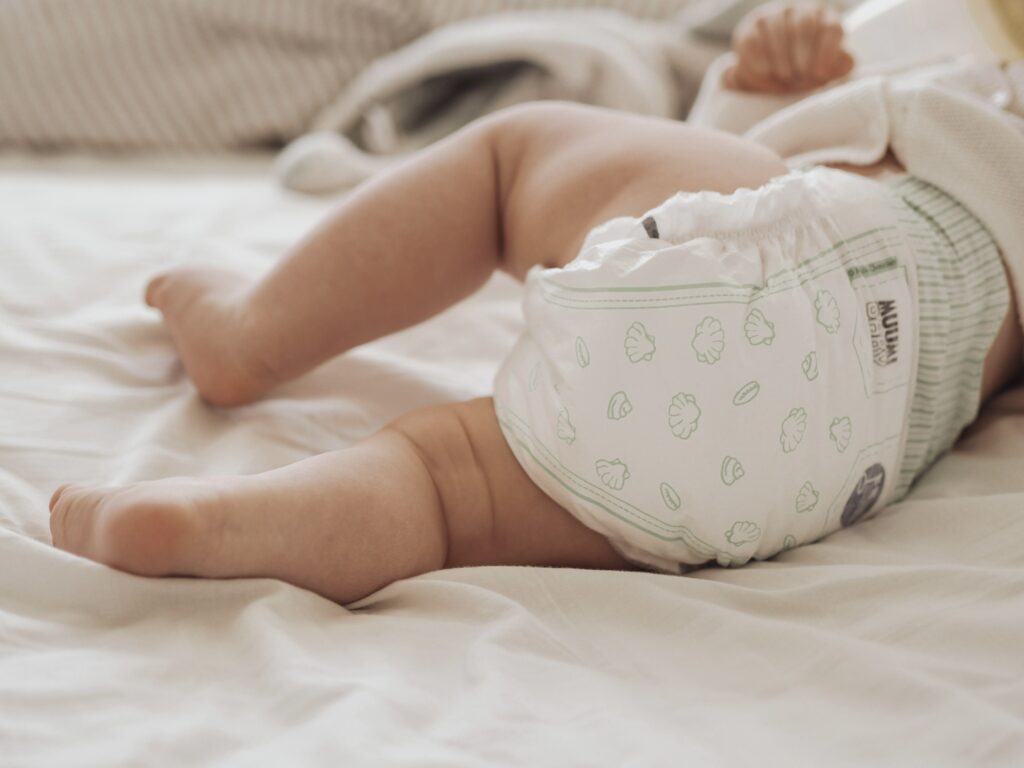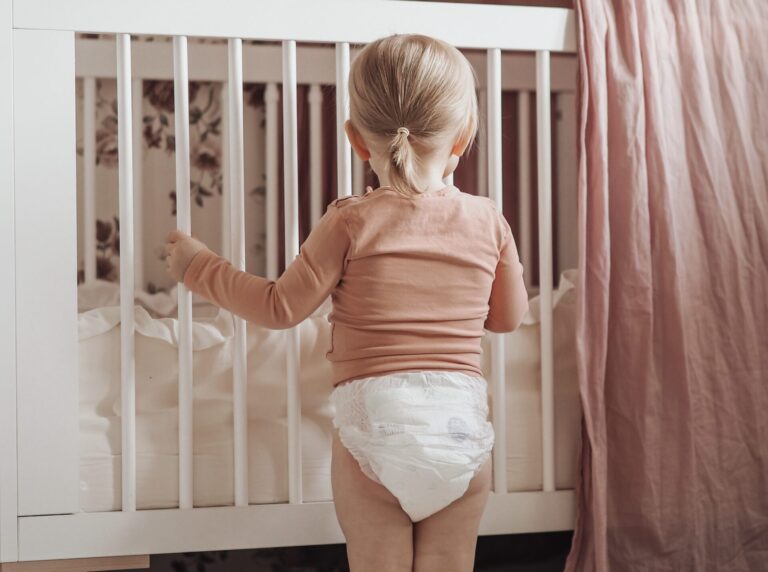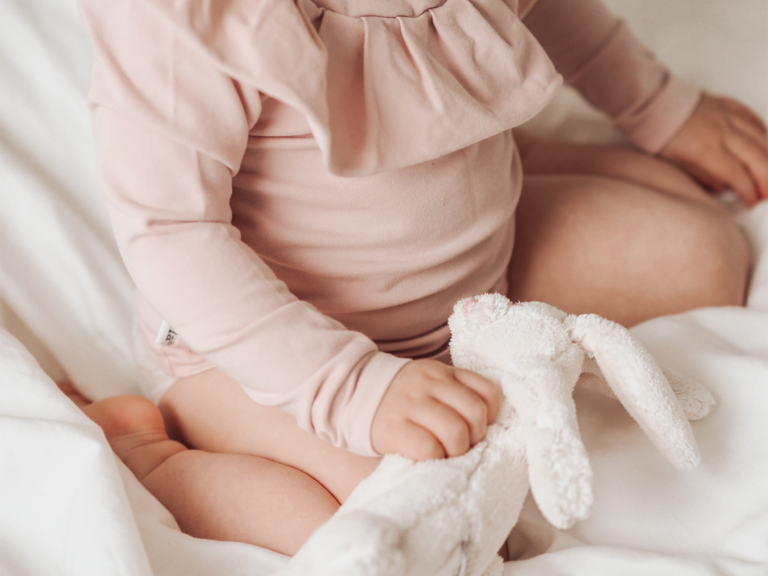The world of sleep is an important source of growth and development for babies, but achieving a peaceful night’s sleep can be a challenge for both the baby and the parents. So how can you make sure your six-month-old sleeps better? In this blog article, we look at advice from the experts and discuss how choosing the right type of sleep mattress, for example, can help your baby’s sleep quality. You might be surprised how small changes can have a big impact on your baby’s sleep.
The role of sleep routines in the sleep patterns of a 6-month-old baby
It is important to understand the importance of sleep routines in the sleep patterns of a 6-month-old baby. Regular and predictable bedtime routines help your baby settle down and prepare for a good night’s sleep. By establishing a consistent bedtime routine for your baby, which may include washing, changing into nightclothes, a quiet moment such as a reading time, and saying goodnight, your baby will learn to recognise this routine as a signal for bedtime.
By this age, many babies also develop a natural sleep rhythm, which can be supported by parents to help improve the quality and duration of sleep. It is important to stick to a sleep routine every night, including weekends and holidays, to keep your baby’s internal clock regular. This continuity and predictability provides a sense of security, which is essential for a child’s well-being and peace of mind. So it’s not a surprise that studies show that a regular sleep routine improves the quality of sleep for babies and reduces night-time wakefulness.
Creating an optimal sleep environment for your six-month-old
Creating an optimal sleep environment for your six-month-old is an important step towards a better night’s sleep. The temperature in your baby’s room should be cool, around 18-20 degrees Celsius, so that your child does not get too hot when sleeping. Silence is important, but for some babies a light, steady white noise can be reassuring. For example, the sound of a fan or humidifier can help babies relax.
A baby’s cot should be placed in a calm place in a room where there is no direct exposure to bright light or draughts of air. The mattress should be flat and firm to provide secure support for the baby’s back. Blankets and stuffed toys should be kept out of the crib to keep the baby’s airway open at all times. The use of a night light or dim dimmer light can help create a calming atmosphere, making night wakings and baby care easier. A carefully designed sleep environment, down to the smallest details, helps to create a safe and comfortable environment in which your six-month-old can relax and achieve a better quality of sleep.
Check out our other tips for building a safe and comfortable room here!
Is a 6-month-old baby ready for sleep school?
Is your 6-month-old baby ready for sleep school? This question puzzles many parents who are hoping to get uninterrupted sleep for both themselves and their baby. Sleep training refers to practices that teach a child to fall asleep independently and return to sleep after waking. Six months is one milestone at which many experts consider babies ready for regular sleep school, as they are physically able to go longer periods without food.
In principle, parents should assess their baby’s individual readiness and health before starting sleep school. Some children may have specific health problems or developmental needs that need to be taken into account. It is advisable to consult with a health professional before starting sleep school, in order to find the right approach for your child.
Read more about sleep school here!
It’s important to stick to a sleep routine every night, including weekends and holidays, to keep your baby’s internal clock regulated.
Safety and comfort: Choosing a sleeping mattress for your six-month-old baby
Safety and comfort are key factors when choosing a sleeping mattress for your six-month-old baby. A baby’s sleeping mattress should be compact and rigid to support the baby’s growing body and prevent the face from sinking into the material, which could increase the risk of suffocation. The padding should be made of breathable material, which helps air circulation and regulates temperature, preventing the baby from getting too hot while sleeping. Waterproof protection can help keep the mattress dry in the event of any leaks, which will also prolong the life of the mattress. Non-allergenic materials are ideal as they reduce the risk of allergic reactions. It is recommended that parents invest in a good quality mattress that will last for the first few years of their baby’s life. A proper investment in a sleeping mattress is an investment in the safety and well-being of the child, and having a comfortable and safe sleeping environment can contribute to better sleep for both the child and the parents.
The effect of diet and bedtime on the sleepiness of the overnight sleeper
The correct timing of diet and bedtime should not be forgotten when trying to improve a six-month-old’s sleep. Your baby’s mealtimes should be timed to support their natural sleep rhythms, but not to cause discomfort at bedtime. A heavy meal just before bedtime can make the baby restless and disturb sleep, while a last meal too early can lead to hunger and therefore night waking. Many experts recommend a light and nutritious evening meal about an hour before bedtime.
Parents should also pay attention to the type of food they feed their baby. Highly digestible and protein-rich foods, such as pureed vegetables and meat or fish, can promote sleep, while sugary treats and potentially allergenic substances should be avoided in the evening. Breast milk or its substitute in appropriate portions can help your baby feel full and calm before bedtime. Parents should also be aware of the nutritional needs of a 6-month-old baby and the meal intervals during the day. Finding the optimal timing may take some experimentation, but balancing diet and sleep time is often an effective way to help improve the quality of sleep.

The most common mistakes parents make when it comes to their six-month-old’s sleep habits
The most common mistakes parents make with their six-month-old’s sleep practices are often very understandable and stem mainly from fatigue, worry and lack of knowledge. For example, a lack of consistency at bedtime can disrupt the baby’s internal clock and make sleep more challenging. In addition, although comforting the baby immediately after each crying episode is a natural instinct, it can prevent the baby from learning to fall asleep on their own or calm down after a night’s sleep.
Another common mistake is creating an inappropriate sleeping environment. A room that is too warm or that has harsh lighting can affect the quality of your baby’s sleep. Parents should also avoid excessive stimulation at bedtime, such as moving toys, bright lights or noises that can stimulate the baby just as they are settling down for sleep. Overfeeding or tiring babies before bedtime is another common stumbling block. Babies can become restless and have more difficulty falling asleep if they are offered too much food or kept awake despite signs of tiredness.
Finally, the parents’ own stress and fatigue can be transferred to the baby, which can make bedtime and sleep more restless. For this reason, it is important that parents also take care of their own well-being to better support their baby’s sleep patterns.
Sleep disorders: When to worry?
Sleep disorders are something parents should pay particular attention to when monitoring their six-month-old’s sleep. Although intermittent night-time sleep may be part of normal development at this age, there are some signs that may indicate possible sleep disorders. For example, if your baby wakes up very frequently and is unable to return to sleep, or if your baby’s sleep rhythm seems unusually irregular, it may be wise to consult a health professional. Another indication of sleep disorder is a change in your baby’s daily behaviour. Hyperactivity or irritability can sometimes be caused by insufficient sleep. In addition, if there are problems with the baby’s growth or weight development, it may be a sign that nocturnal restlessness is interfering with the necessary rest.
It is important to remember that every child is different and the symptoms of sleep disorders can vary. In some cases, sleep disorders can be caused by digestive problems, allergies or other health issues. For this reason, it is of primary importance that parents are not left alone with uncertainty or worry, but turn to a professional in time, who can assess the situation and offer appropriate advice and action plans.
Here you can read about what sleep deprivation in your baby or toddler is all about!
Tips for better sleep quality: Naps and activity balance
In order to improve the quality of sleep at night, both daytime sleep and balance in the activity level are critical areas. For a half-year-old baby, naps are a necessity, as they are important for both growth and development as well as mood.It is good to remember that naps that are too long or late in the day may disturb the night sleep schedule. Two or three nap periods are often recommended for babies, which are scheduled for the morning and the very beginning of the afternoon.
Maintaining an activity level is another important factor for better sleep quality. A sufficient amount of suitable exercise and stimulating activities helps the baby to tire during the day so that it is easy to calm down for a night’s sleep in the evening. This does not mean exhausting the baby, but an opportunity to release energy by playing and exploring the world. It is important to find a balance between the baby’s naps, activity level and overall daily rhythm. Careful planning and flexible adherence to routines help in this. Parents should look out for the baby’s signs of tiredness and prepare for bedtime regularly to support the natural sleep rhythm.
More tips for better sleep for your baby can be found here!
It is often recommended for babies to have two or three naps in the morning and early afternoon.
The role of sounds and lights in the baby’s sleeping world
The role of sounds and lights has a significant impact on the quality of a half-year-old baby’s sleeping world. Soothing, steady sounds, such as white noise or nature sounds, can help your baby relax and fall into a deeper sleep. Many parents use sound machines or mobile apps that produce soft noises, imitate the mother’s heartbeat, or lull the child to sleep with the waves of the sea or the soothing sounds of the forest. These have been found to have a calming effect on babies and may help mask other disruptive sounds.
In terms of light, a soft night light can provide comfort to babies who are afraid of the dark, and it makes nighttime caregiving easier for parents. On the other hand, blackout curtains or other light-blocking solutions can be particularly useful in the summer and during bright times of the year, when longer hours of daylight can cause disturbances in sleep rhythms. It is important to create a dark and calming environment that signals to the baby that it is time to sleep. Sound and light factors can also change as the baby grows, so parents should be alert and considerate towards the baby’s reactions and preferences, in order to adapt the sleep environment to best meet the child’s needs and thus help create optimal conditions for a quality night’s sleep.
How do Finnish Moomin Baby diapers support your half-year-old baby’s sleep?
Moomin Baby diapers are especially known for their skin-friendliness. A good night’s sleep is important for your baby’s well-being, and staying dry is key for your baby to sleep soundly. In Finnish Moomin Baby diapers, attention has especially been paid to absorbency and fit, which reduces the risk of leaks and thus helps prevent nighttime disturbances.
In addition, well-fitting and properly attached Moomin Baby diapers reduce chafing and prevent rashes, which increases the baby’s comfort and improves the quality of sleep. Choosing the right size diaper that fits well but is still comfortable around baby will help parents ensure that their baby sleeps more soundly without extra diaper changes at night. Especially at this age, when many half-year-old babies start to move more and may turn over at night, the flexibility and reliability of Moomin Baby diapers support the baby’s accessible movement during sleep. However, it is important to remember that the diaper is only one part of supporting the baby’s night sleep, and it should work together with other sleep routines and environmental factors to create the best possible conditions for the baby’s good night’s sleep.
We welcome you to try Moomin Baby diapers by ordering a free Diaper hero sample here!










